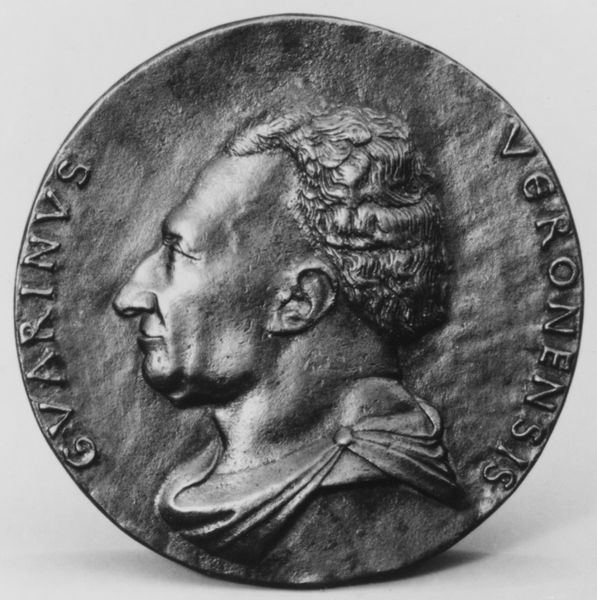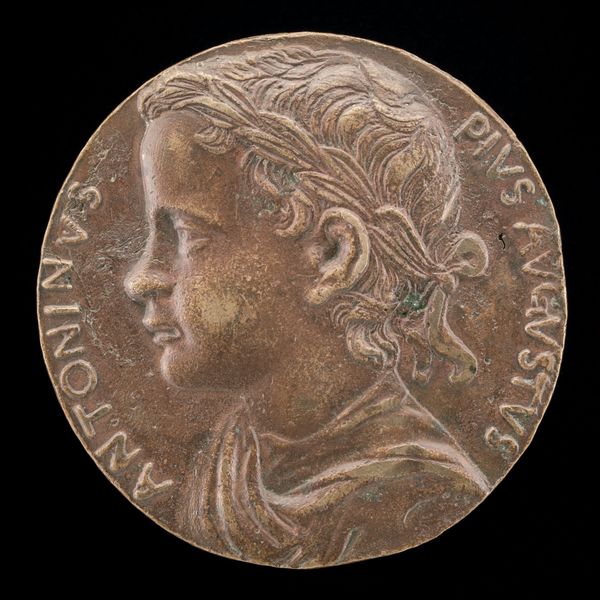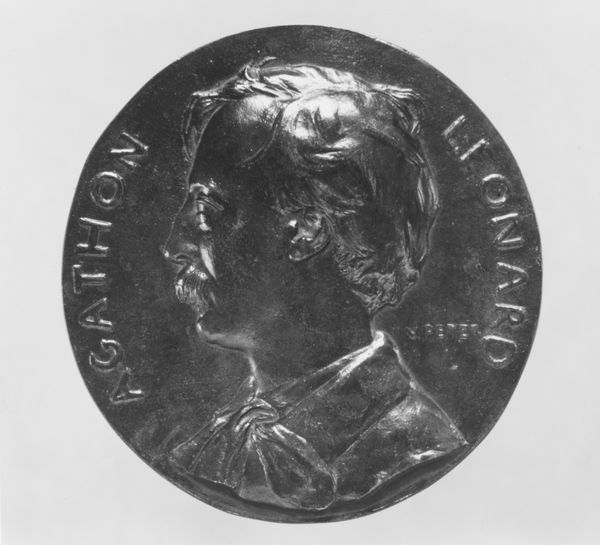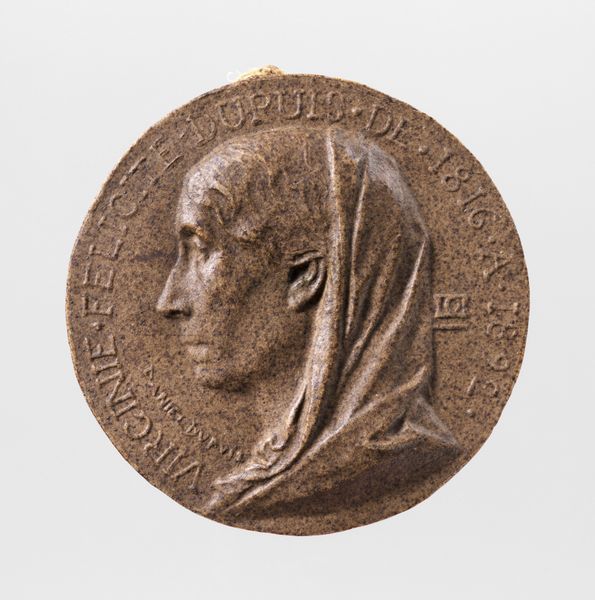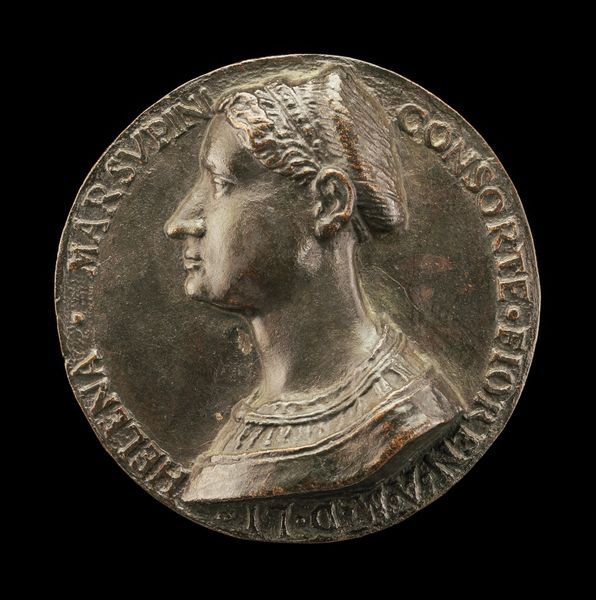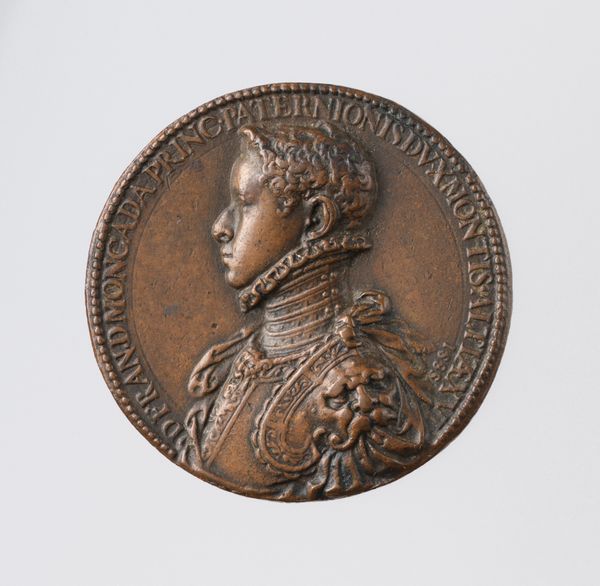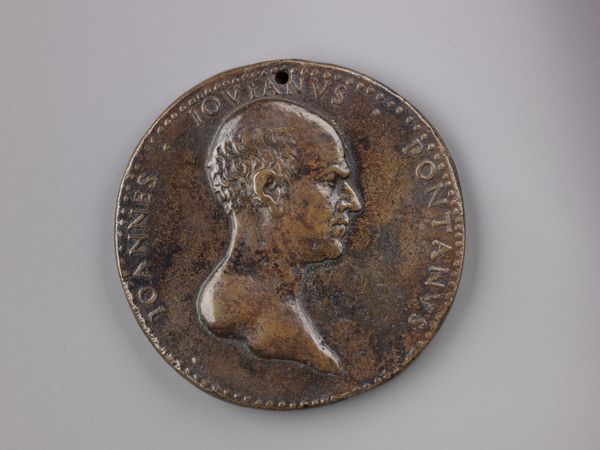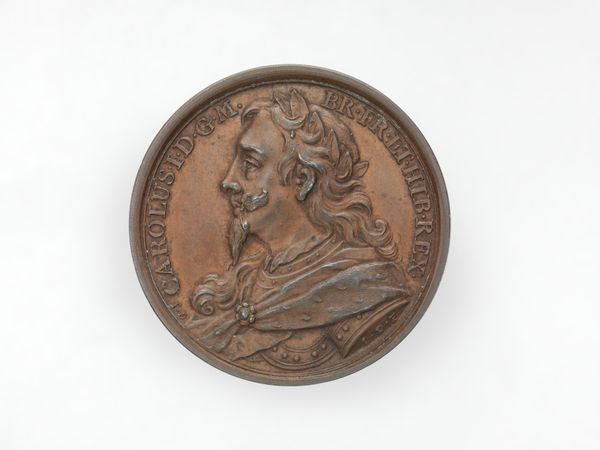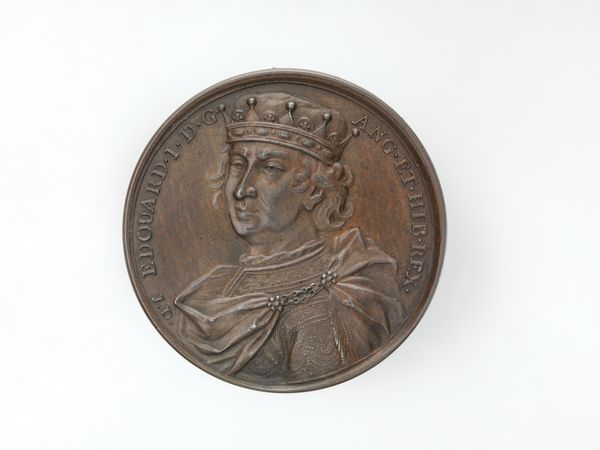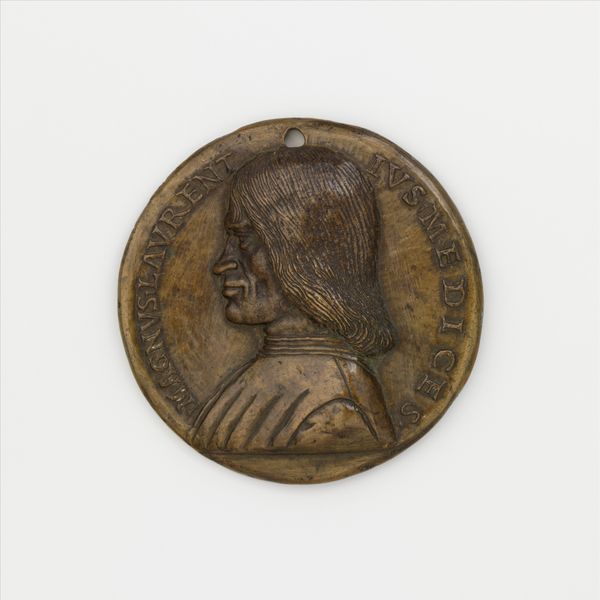
Dimensions: Overall (confirmed): 6 1/2 × 6 1/2 in. (16.5 × 16.5 cm)
Copyright: Public Domain
Curator: Let's turn our attention to this bronze sculpture, “Pierre-Paul David d'Angers,” created by Victor Peter in 1881. It's a portrait medal, currently held here at The Metropolitan Museum of Art. What strikes you about it? Editor: Immediately, I notice the craftsmanship; you can see the labor involved in casting bronze and achieving such clarity in the profile. The crisp details against the matte surface of the medal evoke a sense of solemnity. Curator: I agree. It's worth noting that David d’Angers, the subject of the portrait, was a prominent sculptor known for his republican sympathies during a politically turbulent time in France. Peter, creating this medal posthumously, enters that history. How might his representation of this historical figure inform our understanding? Editor: Thinking about the bronze itself— bronze lends itself to monumental works, but here we see it miniaturized into a medal, almost a token. Considering bronze as a resource, where it comes from, and who controls it—we can consider this art object as an accessible tool. Curator: Precisely. It offers an intriguing juxtaposition: a small object commemorating a figure with grand ideals. His gaze, frozen in bronze, transcends temporality. What kind of narratives do you believe such pieces promote? Editor: To me, medals like these act as multiples: designed for broad distribution, thereby enabling republican values to touch many hands, homes, and imaginations across economic strata. It’s a populist aesthetic— challenging notions of who consumes and appreciates art. Curator: Absolutely. The portrait serves not only to memorialize an individual but also to promote specific political beliefs. This reinforces art's capacity to intertwine with social change, underscoring its critical contribution to evolving dialogues across time. Editor: Looking closely, this piece compels us to contemplate its tangible value: the industrial processes it encapsulates, along with what its form enables regarding visibility. These insights push us to see beyond the profile in relief, extending into manufacturing practices. Curator: By viewing it through this lens, we confront complex themes involving historical legacies, artistic methods, and cultural viewpoints. Each interaction prompts us to broaden and transform the meanings encapsulated in an artwork—beyond traditional interpretation. Editor: Right, engaging with the process and considering accessibility offers insight to production and appreciation—challenging us to redefine traditional assumptions surrounding the accessibility and understanding of this Neoclassical profile.
Comments
No comments
Be the first to comment and join the conversation on the ultimate creative platform.
